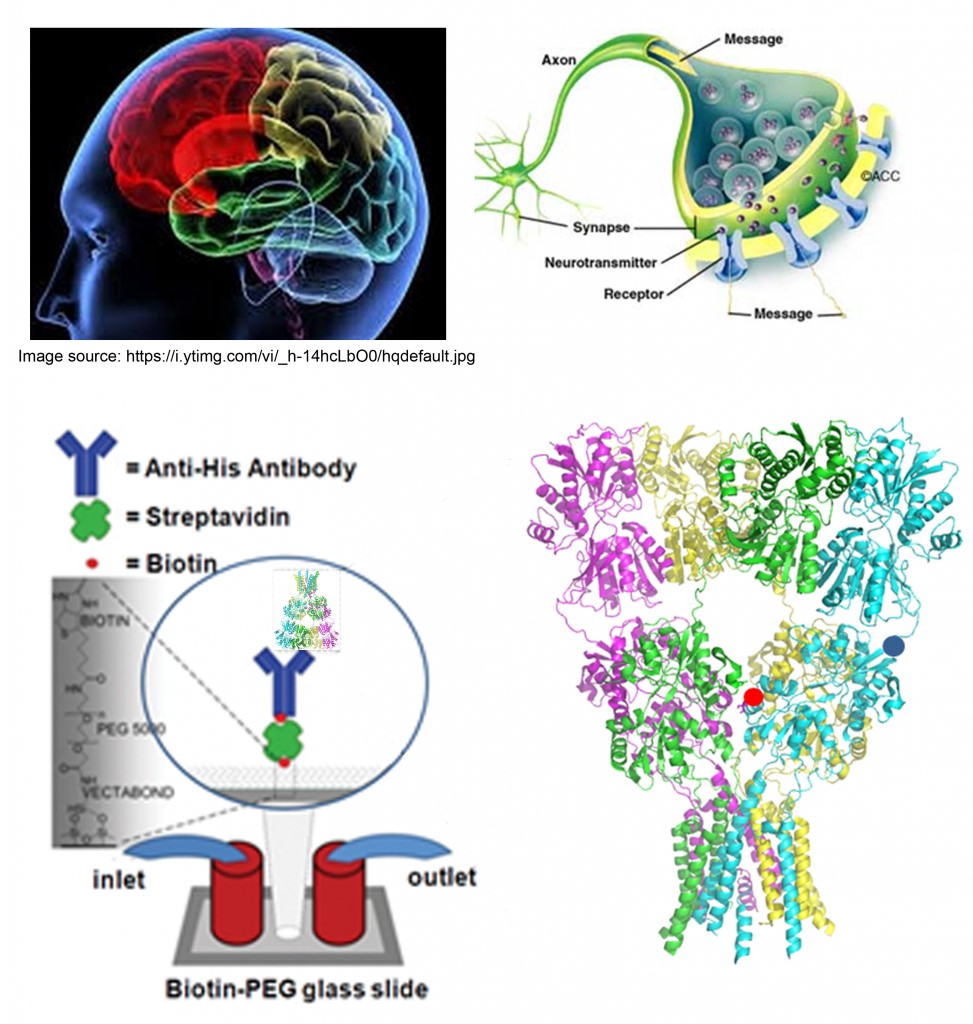Research

Chemical Interactions, dynamics and function
Structure and Function of Neurotransmitter Receptors
Communication between nerve cells serves as the basis of all brain activity, and one of the fundamental steps involved in signal transmission between the nerve cells is the conversion of a chemical signal liberated at the end of one nerve cell into an electrical signal at the second nerve cell. This step is mediated by a class of membrane-bound proteins known as neurotransmitter receptors. Glutamate receptors belong to this family of proteins, and are the main excitatory receptors. Glutamate receptors belong to this family of proteins, and are the main excitatory receptors in the central nervous system.
Our laboratory is interested in gaining an understanding of agonist-mediated activation and desensitization of these receptors by determining the structural changes in the protein induced by agonist binding. This is achieved by using various cutting edge spectroscopic methods that allow the characterization of the dynamic state structure of the proteins. The structural changes thus determined are correlated to the functional consequences as measured by electrophysiological measurements. These investigations provide a detailed understanding of the agonist-controlled function of the glutamate receptors and hence aid in the rational design of drugs targeting this group of important proteins that are involved in diverse neuropathologies, such as epilepsy and ischemia.